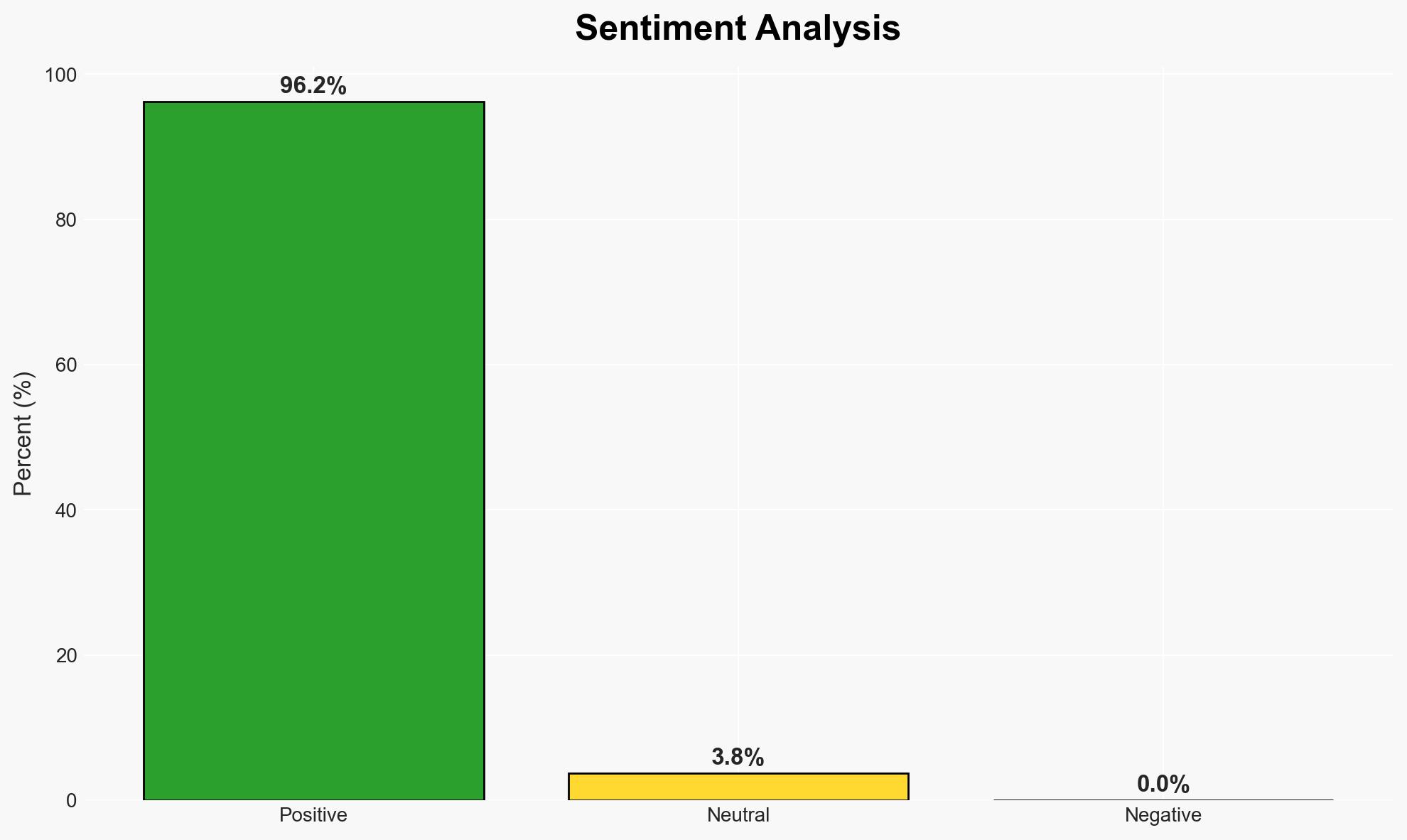Ilya Sutskever’s Perspective on Advancing AI from Scalability to Research Focus
Published on: 2025-11-26
AI-powered OSINT brief from verified open sources. Automated NLP signal extraction with human verification. See our Methodology and Why WorldWideWatchers.
Intelligence Report: From Scaling to Research Ilya Sutskevers Vision for AI
1. BLUF (Bottom Line Up Front)
The transition from scaling AI models to a research-focused approach is likely to drive significant advancements in AI’s adaptability and generalization capabilities. This shift is expected to impact economic sectors by enhancing AI’s integration into complex real-world applications. Moderate confidence is placed in the hypothesis that research-driven AI development will bridge current capability gaps.
2. Competing Hypotheses
- Hypothesis A: The shift towards research-focused AI development will enhance AI’s ability to generalize and adapt, leading to greater economic impact. This is supported by the need for innovative methods to overcome current limitations in AI’s generalization capabilities. However, uncertainties remain regarding the pace and effectiveness of these research efforts.
- Hypothesis B: The current focus on scaling AI models will continue to dominate, with incremental improvements in AI capabilities. This is supported by the historical success of scaling in driving AI advancements, but it may not address the fundamental limitations in adaptability and generalization.
- Assessment: Hypothesis A is currently better supported due to the increasing recognition of the limitations of scaling and the strategic shift towards research-driven approaches. Key indicators that could shift this judgment include breakthroughs in scaling techniques or significant delays in research outcomes.
3. Key Assumptions and Red Flags
- Assumptions: AI research will successfully address current limitations in generalization; economic sectors are prepared to integrate advanced AI capabilities; reinforcement learning environments will improve AI adaptability.
- Information Gaps: Specific timelines for research breakthroughs; detailed data on economic sectors’ readiness for AI integration; comprehensive evaluation of current AI model limitations.
- Bias & Deception Risks: Potential overestimation of research impact due to confirmation bias; source bias from AI industry stakeholders promoting research agendas; lack of transparency in AI development processes.
4. Implications and Strategic Risks
The shift towards research-focused AI development could lead to significant advancements in AI’s real-world applicability, impacting various domains over time.
- Political / Geopolitical: Potential for increased competition among nations to lead in AI research and development, influencing global power dynamics.
- Security / Counter-Terrorism: Enhanced AI capabilities could improve threat detection and response, but also pose risks if adversaries exploit AI advancements.
- Cyber / Information Space: AI advancements could lead to more sophisticated cyber operations, both defensive and offensive.
- Economic / Social: Improved AI integration could drive economic growth but may also lead to workforce displacement and require social adaptation.
5. Recommendations and Outlook
- Immediate Actions (0–30 days): Monitor developments in AI research initiatives; engage with key AI research institutions to assess progress and potential collaborations.
- Medium-Term Posture (1–12 months): Develop resilience measures to address potential workforce impacts; foster partnerships with AI leaders to leverage advancements.
- Scenario Outlook:
- Best: Rapid AI advancements lead to economic growth and enhanced security capabilities.
- Worst: Delays in research lead to stagnation, with adversaries exploiting AI vulnerabilities.
- Most-Likely: Gradual improvements in AI capabilities with moderate economic and security benefits.
6. Key Individuals and Entities
- Not clearly identifiable from open sources in this snippet.
7. Thematic Tags
Cybersecurity, This brief is tagged under: national security threats; cybersecurity; counter-terrorism; economic impact of AI; AI research and development
Structured Analytic Techniques Applied
- Adversarial Threat Simulation: Model and simulate actions of cyber adversaries to anticipate vulnerabilities and improve resilience.
- Indicators Development: Detect and monitor behavioral or technical anomalies across systems for early threat detection.
- Bayesian Scenario Modeling: Forecast futures under uncertainty via probabilistic logic.
- Narrative Pattern Analysis: Deconstruct and track propaganda or influence narratives.
Explore more:
Cybersecurity Briefs ·
Daily Summary ·
Support us





